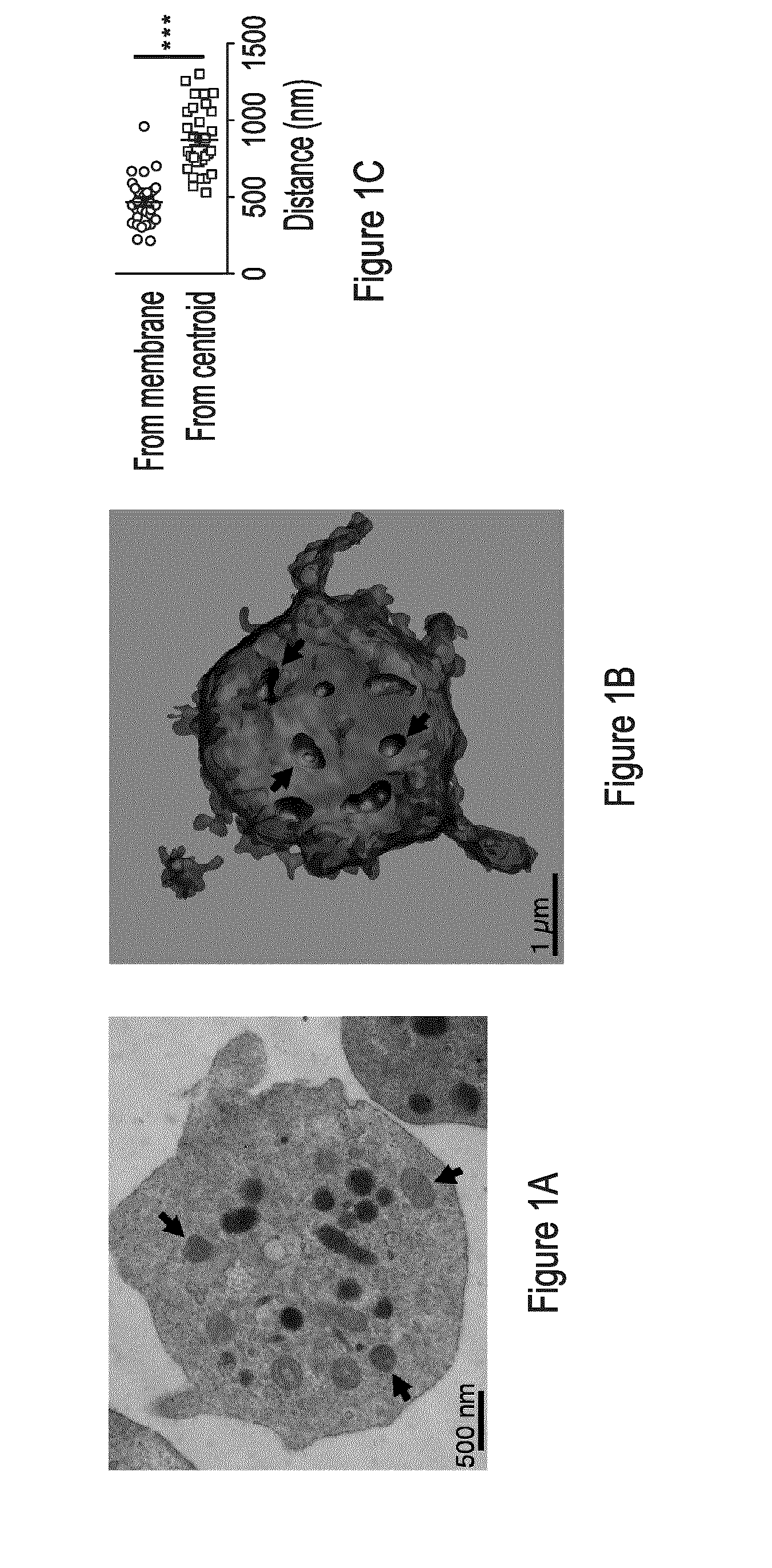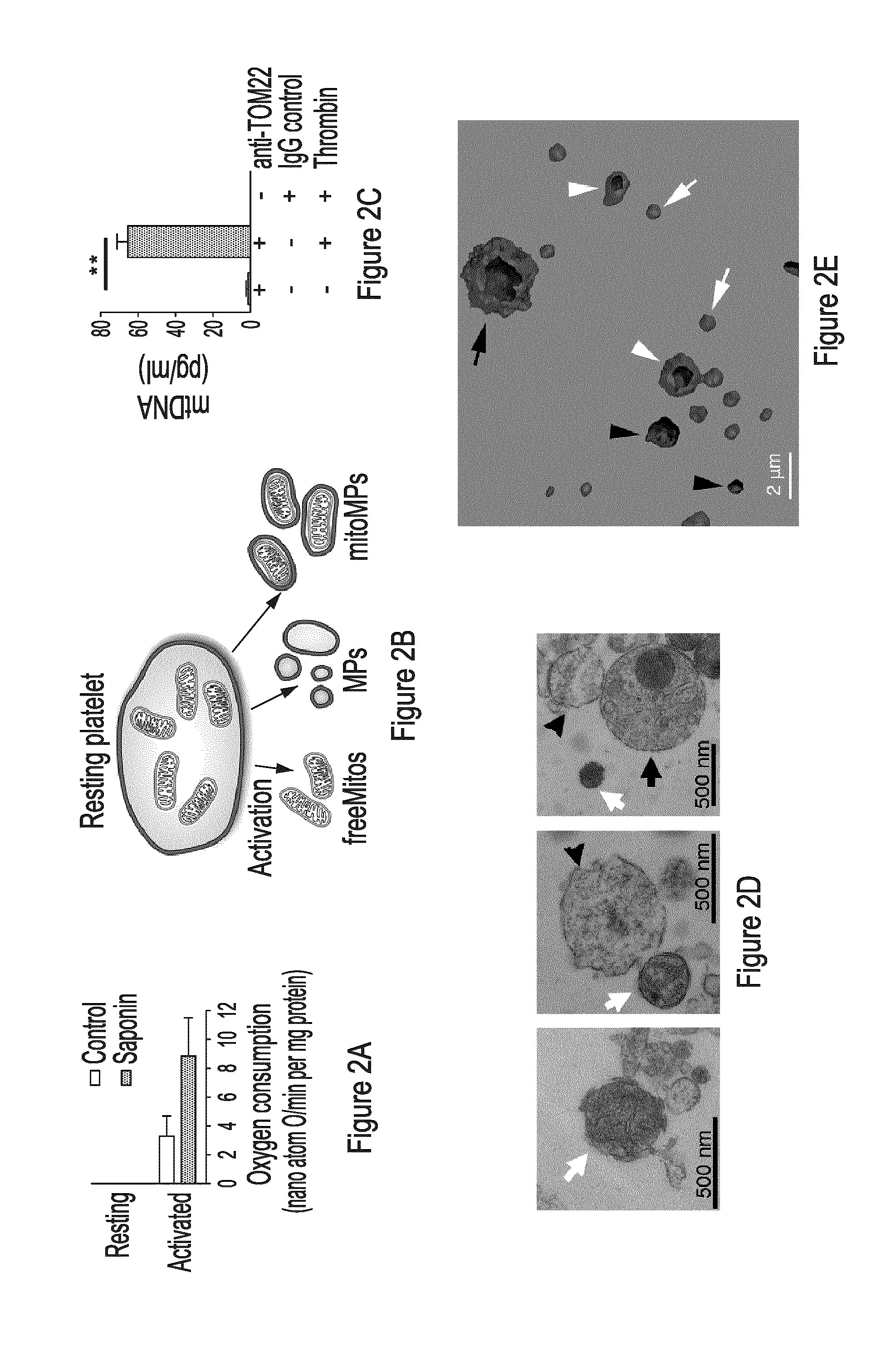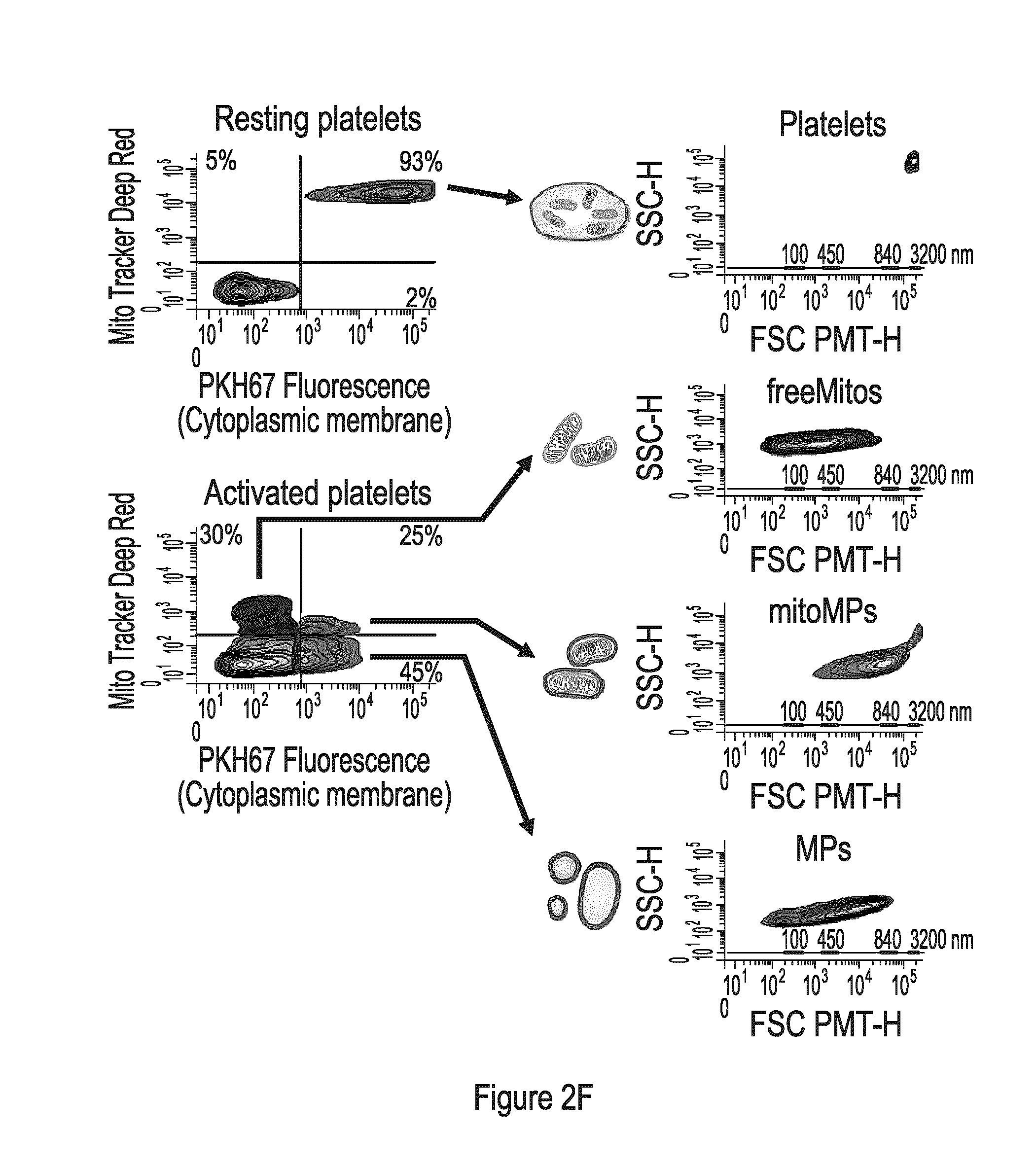Extracellular Mitochondrial Components for Detecting Inflammatory Reactions and Conditions
a technology of extracellular mitochondrial components and inflammatory reactions, applied in the direction of biological material analysis, material analysis, instruments, etc., can solve the problem of limiting the shelf life and achieve the effects of preventing the release, inhibiting the release, and preventing the release of sterile inflammation mediators
- Summary
- Abstract
- Description
- Claims
- Application Information
AI Technical Summary
Benefits of technology
Problems solved by technology
Method used
Image
Examples
example i
Materials and Methods
[0102]Mice.
[0103]All studies were approved by the institutional review board protocol (Université Laval). Guidelines of the Canadian Council on Animal Care were followed in a protocol approved by the Animal Welfare Committee at Laval University. For our studies, we used 6- to 10-week-old male mice (C57BL / 6N and BALB / c; Charles River). For in vivo experiments in which secreted phospholipase A2 IIA (sPLA2-IIA) contribution is evaluated, we used C57BL / 6J (Jackson Laboratories) and sPLA2-IIA-sufficient mice as previously reported (Grass et al. 1996).
[0104]Cells and Human Fluid Preparation.
[0105]Blood was obtained from healthy human volunteers (citrate as anticoagulant) under an approved institutional review board protocol (CRCHUQ; Université Laval) and in accordance with the Declaration of Helsinki. Platelets, platelet MPs (96% of them expressing CD41), and human polymorphonuclear leukocytes were prepared as previously described (Cloutier et al. 2013). Platelet-free...
example ii
Characterization of Mitochondria Released from Platelets
[0147]The material and methods used in this Example are provided in Example I.
[0148]Using fluorescence and transmission electron microscopy (TEM), we found that unactivated platelets contain an average of ˜4 mitochondria, frequently located in the vicinity of the plasma membrane (FIGS. 1A-C; FIG. 8A and data not shown). Remarkably, a fraction of these mitochondria promptly localizes in pseudopodia on activation by thrombin, a serine protease that participates in blood coagulation (FIG. 8B and data not shown).
[0149]In addition to promoting release of granule contents, platelet activation triggers cytoplasmic membrane budding and the shedding of submicron vesicles called microparticles (MPs) (Boilard et al. 2012, György et al. 2011). Taking into account the localization of mitochondria in the vicinity of the cytoplasmic membrane, we hypothesized that mitochondria might be packaged within MPs and form mitochondria-containing micro...
example iii
Characterization of Mitochondria from Platelets in Lupus
[0168]The material an methods used in this Example are provided in Example I.
[0169]We verified the presence of mitochondrial immune complexes in the plasma of 192 patients from the established University of Toronto Lupus Clinic (Table 2).
[0170]Table 2. Demographics and disease characteristics of the 192 women that participated in the study of fatty acids in lupus. We have recruited and characterized 192 women with lupus from the University of Toronto Lupus Clinic. This longitudinal observational study includes more than 1 600 persons with SLE that are followed prospectively according to a standardized protocol. We recruited 192 consecutive female patients with SLE and collected demographic variables and disease characteristics as well as serum and plasma. Baseline demographic variables and disease characteristics of these 192 women demonstrate that this is a sample of middle-aged women (mean age (SD)=46.3 years (14.7)) with a l...
PUM
 Login to View More
Login to View More Abstract
Description
Claims
Application Information
 Login to View More
Login to View More - R&D
- Intellectual Property
- Life Sciences
- Materials
- Tech Scout
- Unparalleled Data Quality
- Higher Quality Content
- 60% Fewer Hallucinations
Browse by: Latest US Patents, China's latest patents, Technical Efficacy Thesaurus, Application Domain, Technology Topic, Popular Technical Reports.
© 2025 PatSnap. All rights reserved.Legal|Privacy policy|Modern Slavery Act Transparency Statement|Sitemap|About US| Contact US: help@patsnap.com



